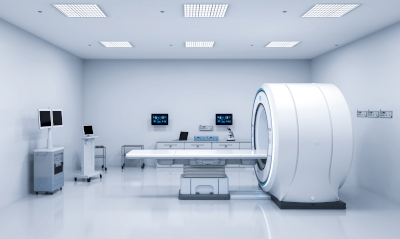What Is an RF Shielded Room?

An RF shielded room is a room designed to block the effects of external electromagnetic waves and magnetic fields that adversely affect electrical and electronic equipment, and to prevent the emission of electromagnetic waves and magnetic fields to the outside.
Electronic devices that use electricity generate electromagnetic waves, and thus electronic devices and equipment are constantly affected by various electric fields. It is also highly likely that they have an effect on their surroundings. A major role of RF shielded rooms is to eliminate the effects of these electromagnetic waves.
RF shielded rooms are covered with conductive materials such as metal or wire mesh. It may be constructed from new construction, or in the case of an existing building, assembled with panels that can be assembled inside. The purpose of use, the measurement details, and the location where you want to install it. The design is based on the environment and other factors.
Uses of RF Shielded Rooms
RF shielded rooms are used to eliminate the adverse effects of electromagnetic waves. Specific applications are as follows:
- Measurement rooms with bio-magnetic field measurement equipment, such as MRI, magnetoencephalography, and magnetocardiography
- Computer rooms for confidentiality purposes
- Measurement rooms for electromagnetic interference and laboratories for signal evaluation without the influence of electromagnetic interference
- Recording studios
It is used to provide an environment for product development and quality control of precision instruments and electronic devices. RF shielded rooms are also used to prevent electromagnetic noise (unwanted radio waves) generated by equipment and devices inside a facility from affecting equipment and devices outside the facility.
Principle of RF Shielded Room
Electromagnetic shielding uses the property of conductive materials such as wire mesh and metal plates to reflect electromagnetic waves. RF shielded rooms are rooms covered with these conductive materials.
What is important in producing RF shielded rooms is not only to shield the electromagnetic waves generated in the space or influenced by the outside, but also to shield the electromagnetic noise leaking from both sides. In particular, shielding of openings (doors, windows, air conditioning openings, etc.) is a key point.
RF shielded rooms can be classified into the following three categories according to the purpose and frequency range to be handled.
- For Electrostatic Shielding
RF Shielded Rooms are used to maintain a constant electric potential in a room. (EEG rooms, hearing test rooms, etc.) - For Magnetic Shielding
RF Shielded Rooms are generally used for geomagnetic fields up to 10 kHz - For Planar Electromagnetic Shielding
RF Shielded Room for 10kHz to 40GHz. (Noise testing rooms for electronic equipment, anechoic chambers, recording studios, etc.)
Shielding in EMC countermeasures often refers to electromagnetic shielding. Electromagnetic shielding is often used for EMC and immunity measures for electronic equipment.
Other Information on RF Shielded Rooms
1. Difference Between Rf Shielded Room and Anechoic Chamber
RF shielded rooms are characterized by shielding the entire room, down to the doors, air conditioning, and power supply, in order to shield electromagnetic waves. On the other hand, an anechoic chamber is further covered with a radio wave absorber to suppress the reflection of radio waves completely.
The absorber has a spongy, thorny shape and contains carbon powder and ferrite components. By covering the entire surface of the room with the absorber, the incident electromagnetic waves can be attenuated to about 1/100,000 of their original volume. Electromagnetic waves cannot exist in an anechoic chamber, which is sometimes called a radio wave anechoic chamber.
2. Antenna Evaluation in an Anechoic Chamber
While the main purpose of RF shielded rooms is to evaluate the quality of the target signal itself by blocking out interference and noise, antenna emission tests are often conducted in an anechoic chamber, taking advantage of the non-reflective nature of electromagnetic waves.
Directionality testing of radio waves is essential for mobile communications, including millimeter wave, automotive radar, and sensing technology. An anechoic chamber is an indispensable environment for evaluating the shape of the radiated beam of an antenna and the electrical characteristics of the antenna itself.
3. Shield Boxes and Anechoic Chambers
Since an anechoic chamber is a very large device, it is costly, including maintenance. RF shielded rooms are less expensive than anechoic chambers because of the radio wave absorber, but still have a certain cost.
Similarly, an anechoic box type is also widely used for various evaluation purposes because of its convenient size.